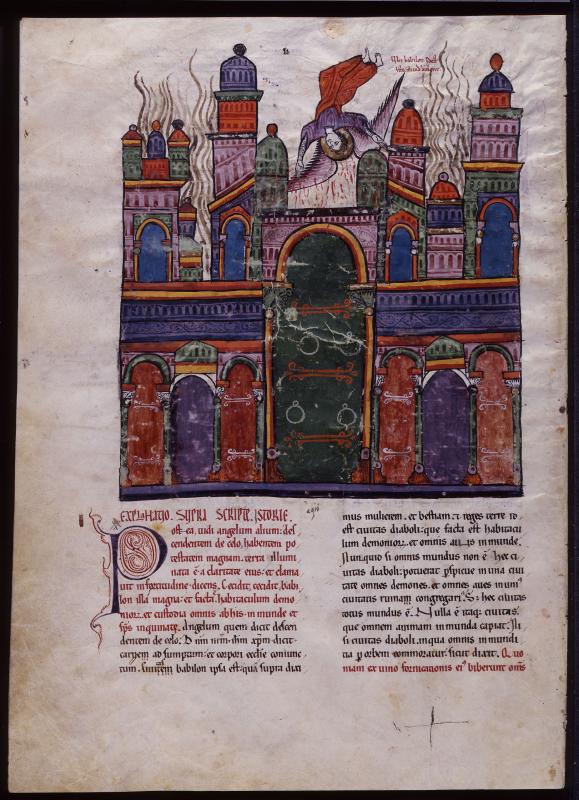
Commentary on the Apocalypse and commentary on the Book of Daniel
Purchased by J. Pierpont Morgan (1837-1913) in 1910
Apocalypse: Babylon, Fall (Revelation 18:1-3) -- Nimbed angel flying down to burning city gate; inscription in upper margin, UBI BABILON ID EST ISTE MUNDUS ARDENT.
And I saw another angel descending from heaven, saying: "Fallen, fallen is Babylon the great. And she has become the habitation of demons, and the keepsake of every unclean spirit, and the possession of every unclean and hateful flying thing." For this reason her afflictions shall arrive in one day: death and grief and famine. And she shall be burned with fire. And the kings of the earth, who have fornicated with her and lived in luxury, shall weep and mourn for themselves over her, when they see the smoke of her conflagration, standing far away, out of fear of her torments, saying: "Woe! Woe! to Babylon, that great and strong city. For in one hour, your judgment has arrived." And the businessmen of the earth shall weep and mourn over her, because no one will buy their merchandise anymore. (Rev. 18:1–11)
The splendid city of Babylon—engulfed in flames—is a symbol of Satan and of all evil. The mourning kings (wearing gold crowns of a type popular about 1220) and merchants grimace and gesture in despair.
